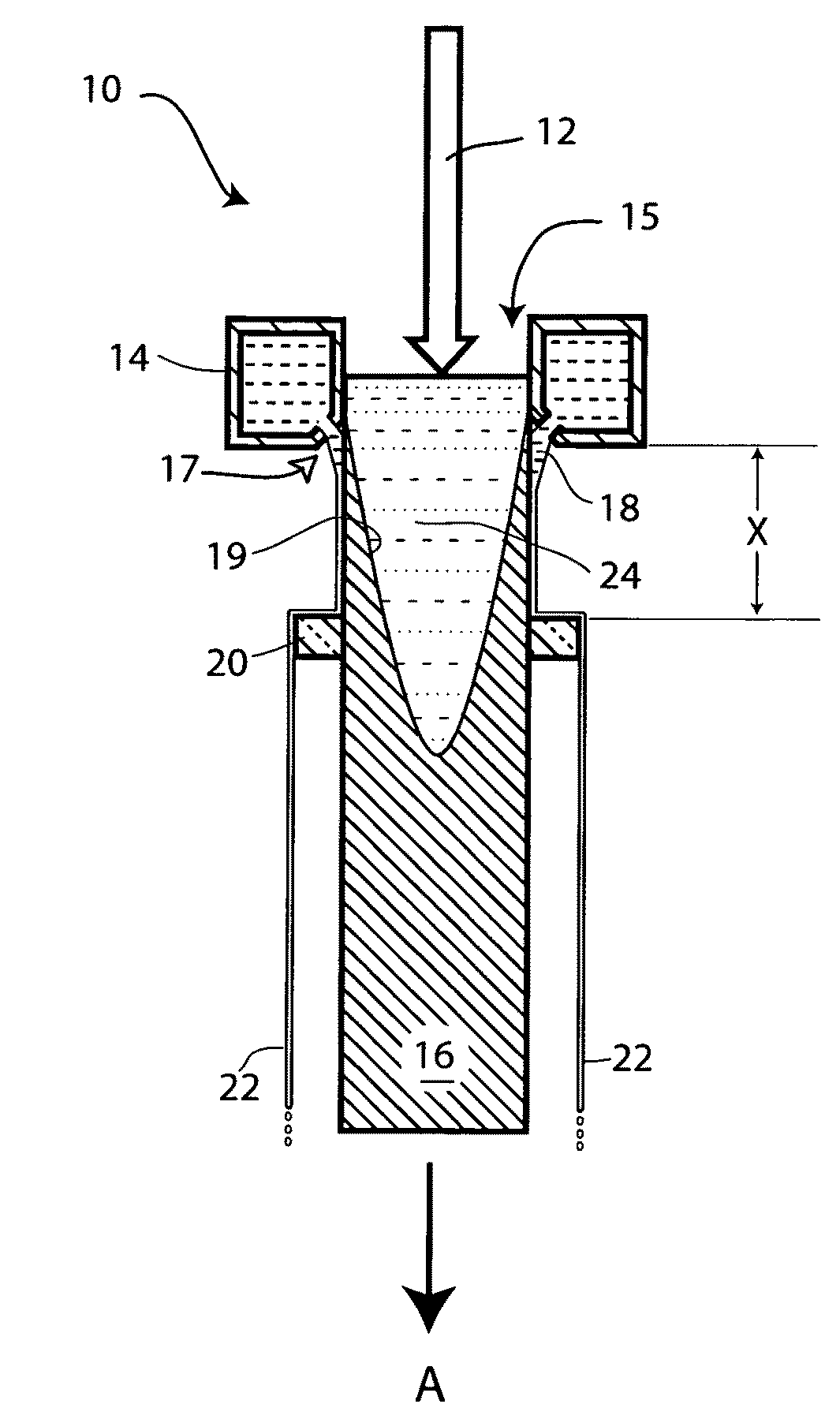Homogenization and heat-treatment of cast metals
a technology of heat treatment and metals, applied in the field of metal casting, can solve the problems of inability to meet the requirements of final product quality, so as to achieve the effect of reducing differences and allowing for modification of casting distan
- Summary
- Abstract
- Description
- Claims
- Application Information
AI Technical Summary
Benefits of technology
Problems solved by technology
Method used
Image
Examples
example 1
[0134]Three direct chill cast ingots were cast in a 530 mm and 1,500 mm Direct Chill Rolling Slab Ingot Mold with a final length of greater than 3 meters. The ingots had an identical composition of A11.5% Mn; 6% Cu according to U.S. Pat. No. 6,019,939 (the disclosure of which is incorporated herein by reference). A first ingot was DC cast according to a conventional procedure, a second was DC cast with in-situ homogenization according to the procedure shown in FIGS. 7 and 8, where the coolant is removed and the ingot is allowed to cool to room temperature after being removed from the casting pit, and the third was DC cast with in-situ quench homogenization according to the procedure of FIG. 9, where the coolant is removed from the surface of the ingot and the ingot is allowed to reheat then quench in a pit of water approximately one meter below the mold.
[0135]In more detail, FIG. 7 shows the surface temperature and the center (core) temperature over time of an Al—Mn—Cu alloy as it i...
example 2
[0157]An Al-4.5% Cu ingot was cast according to the invention and the ingot was cooled (quenched) at the end of the cast. FIG. 20 is and SEM with Copper (Cu) Line Scan of the resulting ingot. The absence of any coring of Copper in the unit cell is to be noted. Although the cells are slightly larger than those of FIG. 16, there is a reduced amount of cast intermetallic at the intersection of the unit cells and the particles are rounded.
[0158]FIG. 21 shows the thermal history of the casting of the ingot illustrating the final quench at the end of the cast. The convergence temperature (452° C.) in this case is below the solvus for the composition chosen, but desirable properties are obtained.
example 3
[0160]An ingot of an Al-0.5% Mg-0.45% Si alloy (6063) was cast according to a process as illustrated in the graph of FIG. 23. This shows the thermal history in the region where solidification and reheat takes place in a case where the bulk of the ingot is not forcibly cooled.
[0161]The same alloy was cast under the conditions shown in FIG. 24 (including a quench). This shows the temperature evolution of an ingot where the surface and core temperatures converged at a temperature of 570° C., and which is then forcibly cooled to room temperature. This can be compared to the procedure shown in FIG. 8 which involved a high rebound temperature and slow cooling, which is desirable when a more rapid correction of the cellular segregation is needed, or when the alloy contains elements that diffuse at a slow pace. The use of a high rebound temperature (considerably above the solvus of the alloy), held for a prolonged period of time, allows elements near the grain boundary to diffuse quite quic...
PUM
| Property | Measurement | Unit |
|---|---|---|
| temperature | aaaaa | aaaaa |
| convergence temperature | aaaaa | aaaaa |
| distance | aaaaa | aaaaa |
Abstract
Description
Claims
Application Information
 Login to View More
Login to View More - R&D
- Intellectual Property
- Life Sciences
- Materials
- Tech Scout
- Unparalleled Data Quality
- Higher Quality Content
- 60% Fewer Hallucinations
Browse by: Latest US Patents, China's latest patents, Technical Efficacy Thesaurus, Application Domain, Technology Topic, Popular Technical Reports.
© 2025 PatSnap. All rights reserved.Legal|Privacy policy|Modern Slavery Act Transparency Statement|Sitemap|About US| Contact US: help@patsnap.com



